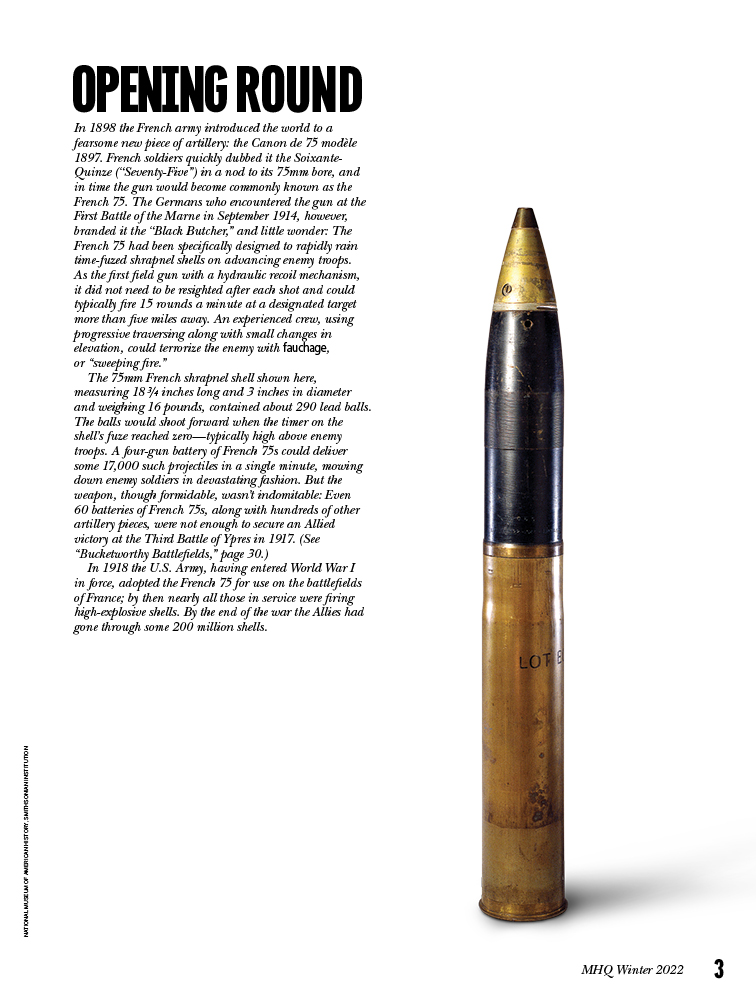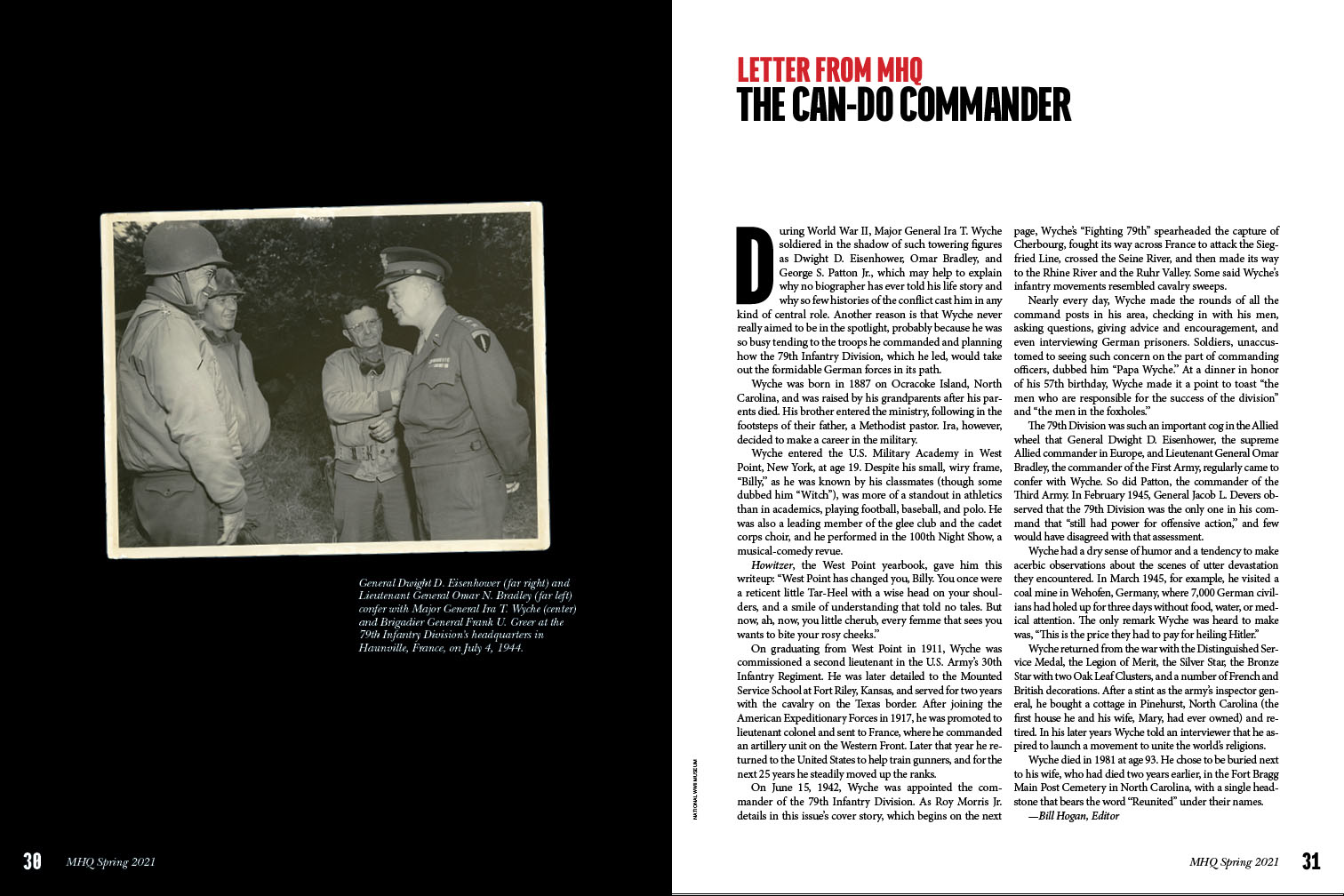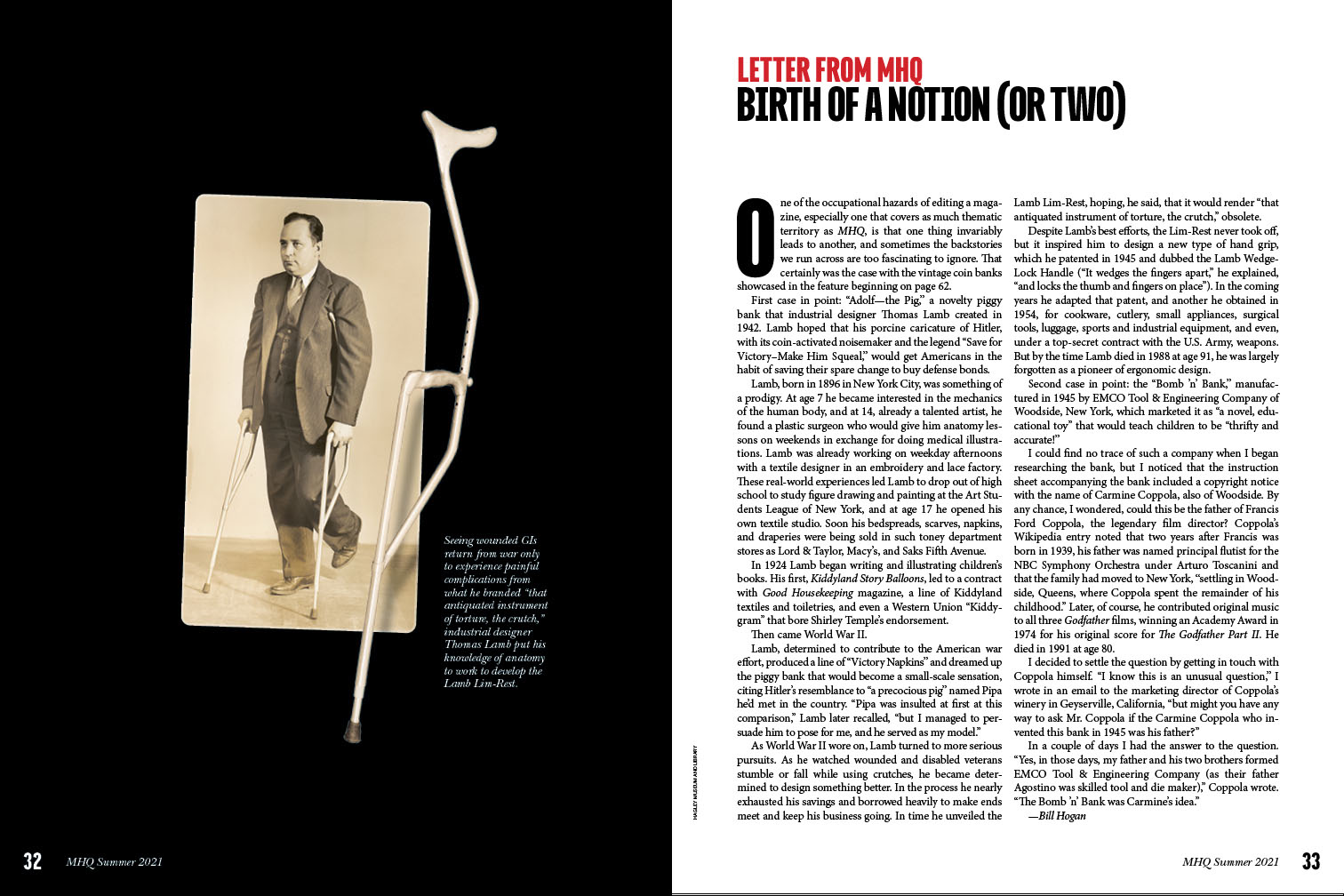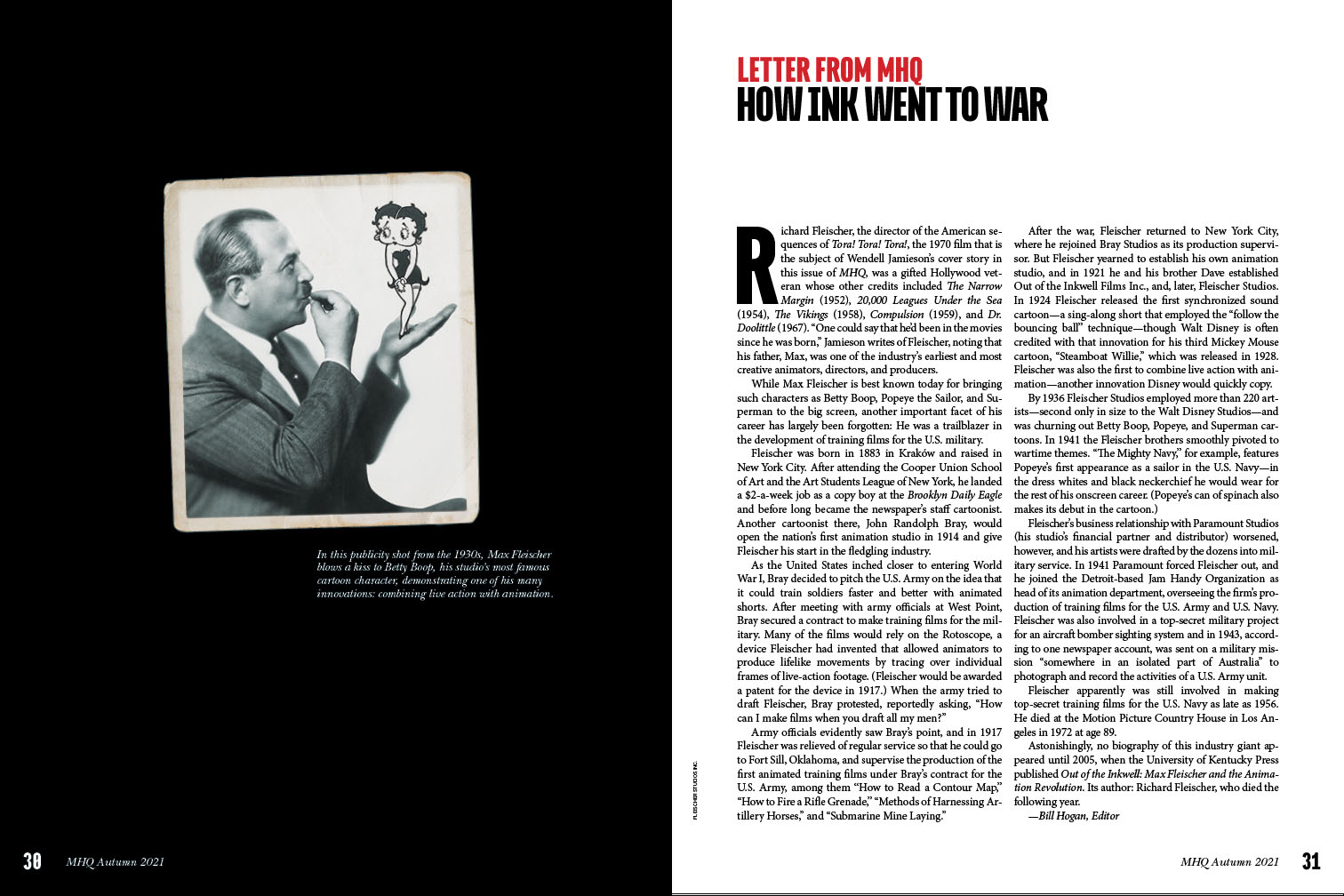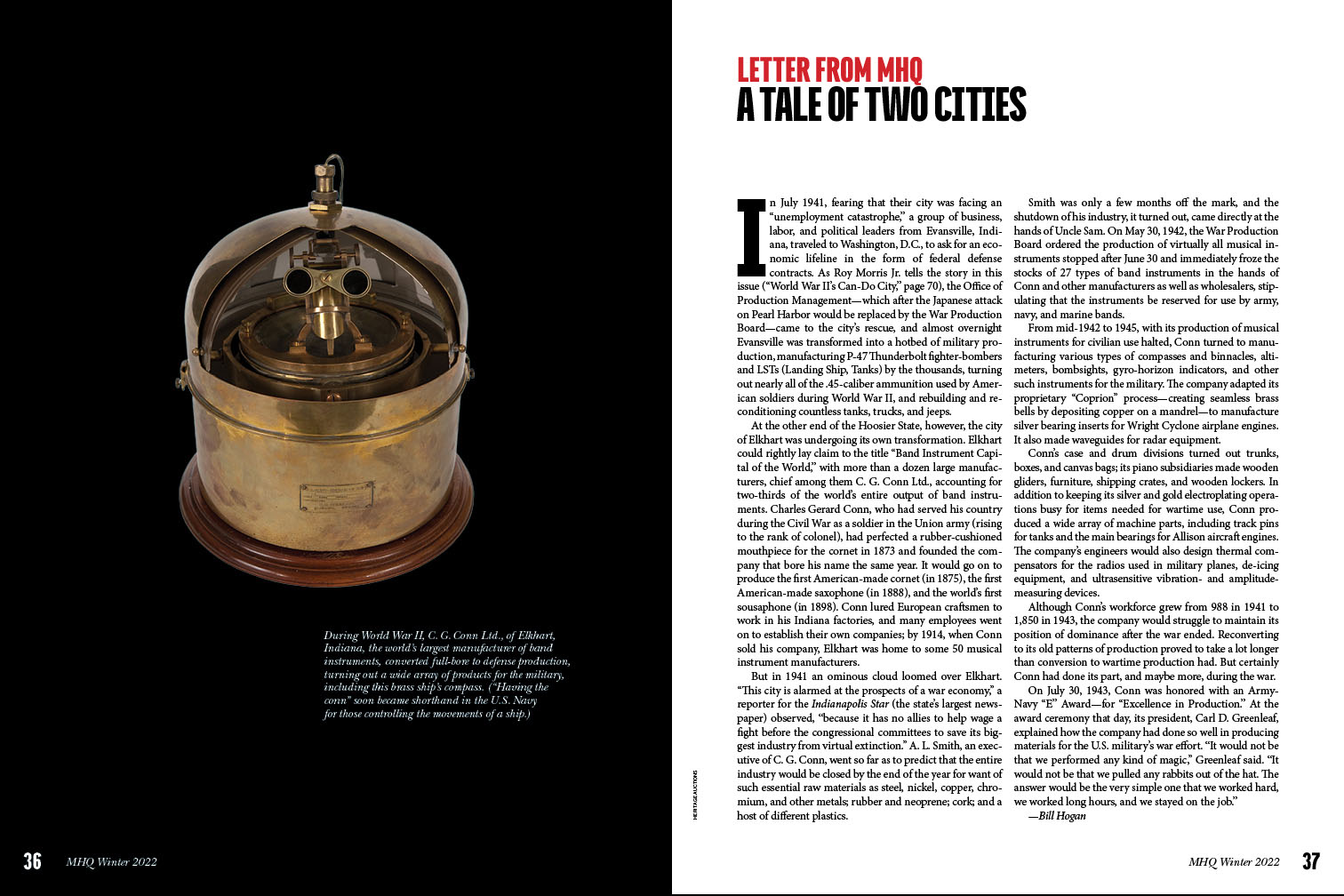In 1898 the French army introduced the world to a fearsome new piece of artillery: the Canon de 75 modèle 1897. French soldiers quickly dubbed it the Soixante-Quinze (“Seventy-Five”) in a nod to its 75mm bore, and in time the gun would become commonly known as the French 75. The Germans who encountered the gun at the First Battle
During World War II, Major General Ira T. Wyche soldiered in the shadow of such towering figures as Dwight D. Eisenhower, Omar Bradley, and George S. Patton Jr., which may help to explain why no biographer has ever told his life story and why so few histories of the conflict cast him in any kind of central role. Another
One of the occupational hazards of editing a magazine, especially one that covers as much thematic territory as MHQ, is that one thing invariably leads to another, and sometimes the backstories we run across are too fascinating to ignore. That certainly was the case with the vintage coin banks showcased in the feature beginning on page 62. First case
Richard Fleischer, the director of the American sequences of Tora! Tora! Tora!, the 1970 film that is the subject of Wendell Jamieson’s cover story in this issue of MHQ, was a gifted Hollywood veteran whose other credits included The Narrow Margin (1952), 20,000 Leagues Under the Sea (1954), The Vikings (1958), Compulsion (1959), and Dr. Doolittle (1967). “One could
In July 1941, fearing that their city was facing an “unemployment catastrophe,” a group of business, labor, and political leaders from Evansville, Indiana, traveled to Washington, D.C., to ask for an economic lifeline in the form of federal defense contracts. As Roy Morris Jr. tells the story in this issue (“World War II’s Can-Do City,” page 70), the Office

